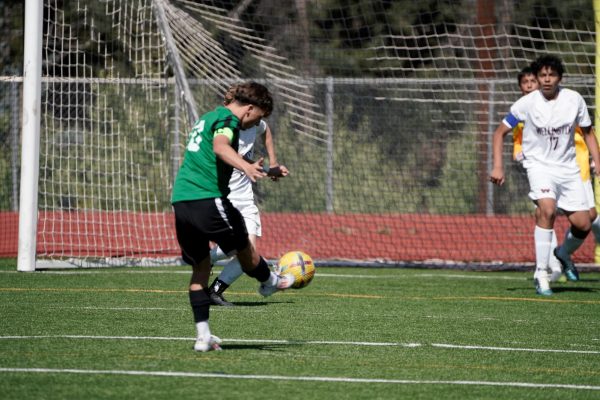Wild Horses
Montana-Wyoming horse range provides freedom to rare wild horses.
Mustang Flats on October 9, 202
The Pryor Mountain Wild Horse range spans 389,650 acres, overlaps the Wyoming-Montana border, and is based out of Lovell, Wyoming, about five hours from Yellowstone National Park. This range was established by the citizens of Lovell on September 11, 1968, so the 100 plus wild horses living on top of the Arrowhead Mountains and in the lower dryhead would be safe and able to live a life with the most freedom possible.
Currently, there are about 180 wild horses living on this range. These horses are descendants of the Spanish Conquistador horses of the early 16th century. It is believed they were brought to the Pryor Mountains by the Crow American Indians in the mid 18th century.
They have been living on this mountain for hundreds of years and as their numbers have increased the herd needed help. So the Forest Service, National Park Service, and Bureau of Land Management (BLM) have been working together to help the herd manage their numbers by holding adoptions.
For years the BLM would conduct roundups, bringing the horses down the mountain using helicopters. The horses would run miles causing some injuries, mainly among the foals. After the horses were in holding pens, certain ones would be selected for adoption while the others would be set free again. Those targeted for adoption would have many tests done before going to their new homes.
The last roundup was held in 2009. After this, helicopters were no longer used but bait pens with salt blocks were set up. This way herd management could continue but the horses were not experiencing as much stress.
The last adoption of the Pryor Mountain wild horses was in 2015 when a total of 17 horses were removed and adopted from the range. These adoptions are infrequent, and because of that, another adoption is thought to be held soon.
Of course, horses that are not adopted don’t have an easy life. Many foals don’t make it past their first birthday, being prey to the largest mountain predator, the mountain lion. Others disappear and are never found. Only on rare occasions are horse bodies found.
In June of 2021, a seven-year-old mare disappeared. However, her body was found. It is thought she died during foaling. This created a food source for the other animals on the mountains. These other animals include bears, lions, coyotes, and vultures. These animals need food as well and are trying to live just as much as the horses. Even though the loss of this mare was unfortunate, she didn’t die in vain, she helped other animals survive.
The circle of life on the mountain includes death and the death of one thing helps the life of another. Even with death always being a possibility there are some horses that take on the odds and live longer lives than some horses in captivity.
Currently, the oldest horse on the range is a mare, named Phoenix, who was born in 1992 making her 29 years old and going into this winter she looks great. It is always a question to range management of who is going to come out of the winter. This year the concern of Phoenix not coming out is extremely high.
During the winter of 2020 a different mare, Seneca, age 22, caught one of her back legs in a strand one barbed wire. It was uncertain if she would live as the wire became embedded in her leg. But sometime this spring she got it off and went on with her life.
The strength these horses have is shared throughout the wild horse population of the United States and the Pryor Mountains of Wyoming is a great place to witness it.
A poem on the Pryor Mountain Wild Horse range can be found here.









